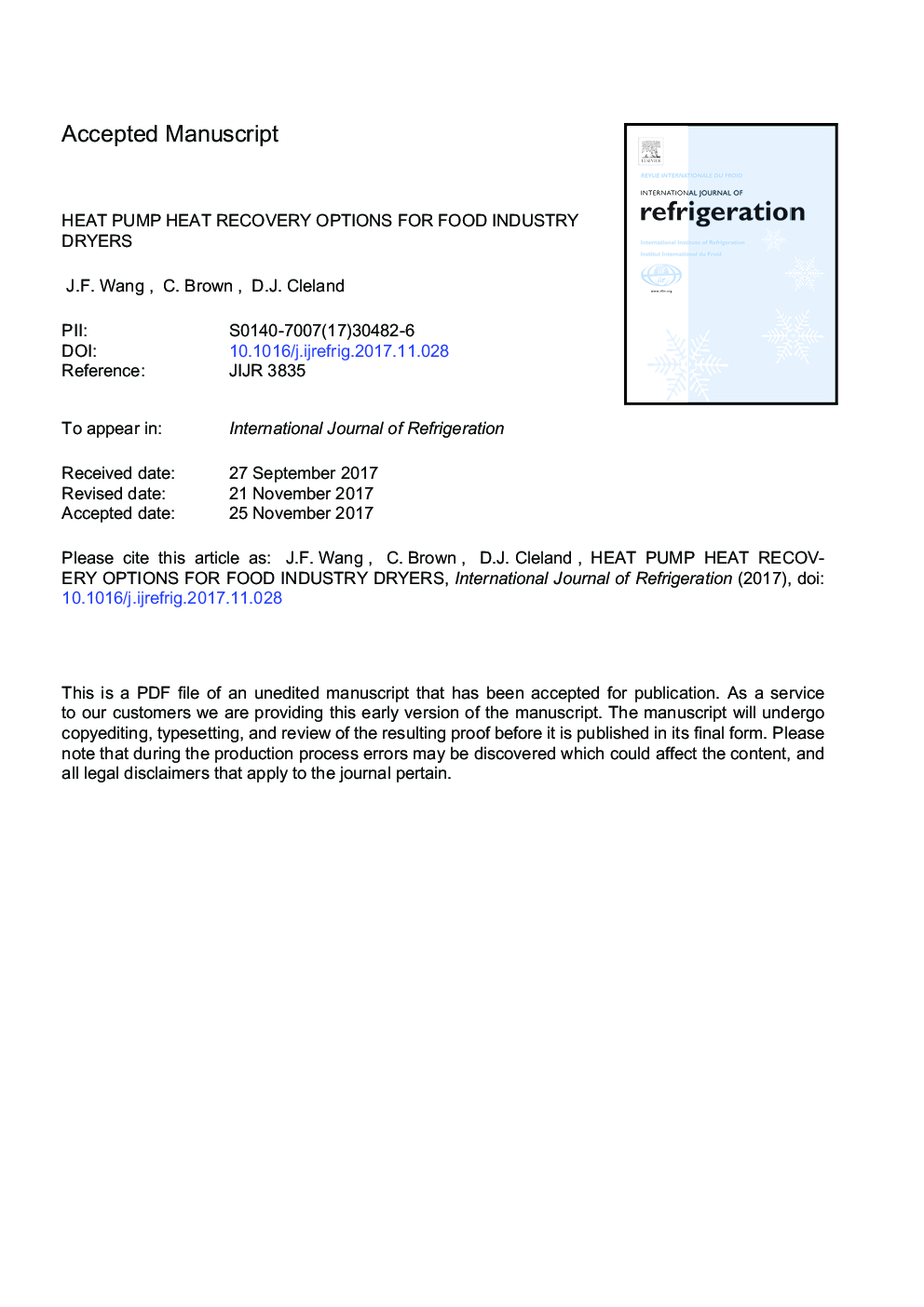| Article ID | Journal | Published Year | Pages | File Type |
|---|---|---|---|---|
| 7175377 | International Journal of Refrigeration | 2018 | 24 Pages |
Abstract
Air heating by heat recovery using air-to-air heat exchangers (AHX) and heat pumps (HP) was analyzed for a typical spray dryer with inlet ambient air heated to 200 °C and exhaust air with dry bulb of 76 °C and dewpoint of 38.5 °C. The HP design is a tradeoff between greater heat recovery and lower COP as evaporation temperature decreases. With an evaporation temperature of 25-30 °C, it was possible to provide up to about 40% of the air heating load with more than 20% lower energy cost. The transcritical cycle, with dehumidification of exhaust air at a constant temperature and inlet air heating in the supercritical region, is thermodynamically well-matched to the drying process. The ideal critical temperature is between 70 °C and 110 °C, so a trade-off between efficiency, cost and safety may be needed with respect to refrigerant choice. Refrigerants R134a looks most promising while R32 and R290 also have good energy efficiency but are flammable. Economically for the typical spray dryer in New Zealand, only use of an AHX is attractive but is limited to about 20% of the air heating. Combining with an R134a HP to get higher heat recovery than an AHX alone would only be attractive if HP capital costs could be reduced significantly to less than about NZ$300 kWâ1 heating capacity.
Related Topics
Physical Sciences and Engineering
Engineering
Mechanical Engineering
Authors
J.F. Wang, C. Brown, D.J. Cleland,
